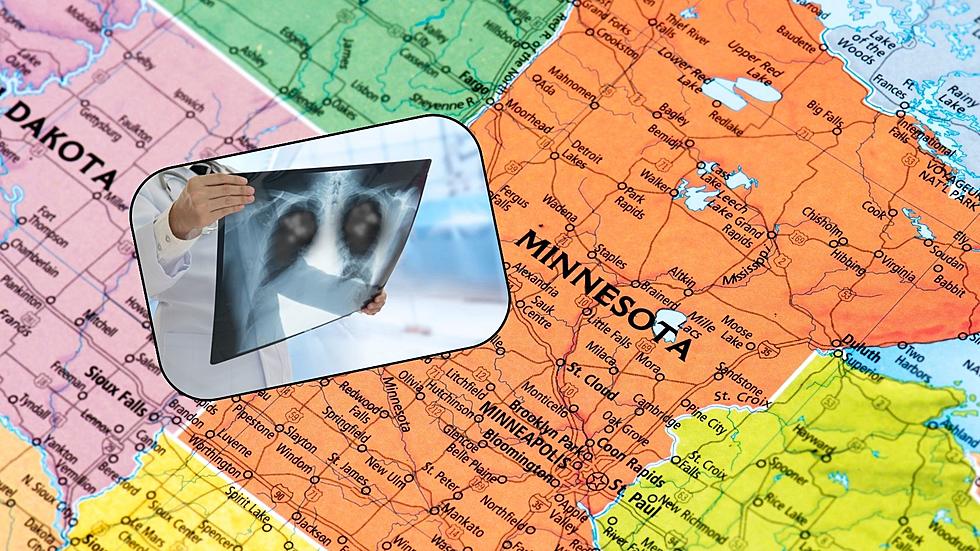
Officials Identify Source Of Minnesota Legionnaires’ Disease Outbreak
According to the CDC, Legionnaires’ disease is a serious type of pneumonia caused by Legionella bacteria, which is commonly found in natural and manmade aquatic environments and can also be found at low concentrations in any public water system. Legionella can live and grow in pipes and devices that use water.
People can get Legionnaires’ by breathing in water droplets containing Legionella bacteria, but not by swallowing water. The most common sources of exposure include devices that create water mist, such as hot tubs, showers, decorative fountains, and cooling towers.
The Minnesota Department of Health notes that on rare occasions, people with swallowing difficulties could be infected if water “goes down the wrong pipe” while drinking and gets into the lungs.

Symptoms of Legionnaires’ disease include fever, chills, cough, shortness of breath, headaches, muscle aches, and fatigue. Other symptoms may include weakness, loss of appetite, confusion, diarrhea, and nausea.
While most cases can be successfully treated with antibiotics, Legionnaires’ disease can be serious and sometimes fatal. In fact, about one out of every 10 people who get sick with Legionnaires’ disease dies.
That is why the Minnesota Department of Health takes Legionnaires’ disease outbreaks very seriously. One such outbreak recently occurred in Grand Rapids, with 14 cases of Legionnaires’ disease having been confirmed since April 2023.
Investigation into the outbreak revealed that case exposures were geographically clustered in homes and other buildings in the area north of Golf Course Road/SE 10th Street, south of NE/NW 8th Street, east of 11th Avenue SW/10th Avenue NW, and west of 7th Avenue SE/8th Avenue NE.
What Caused The Grand Rapids Outbreak?
In February 2024, the Minnesota Department of Health revealed that areas of Grand Rapid's municipal water system were the source of the Legionnaires’ disease outbreak within the city.
Water samples from two buildings in the community subsequently tested positive for Legionella and the Legionella bacteria from the two buildings were highly related to each other and to the Legionella bacteria from patient respiratory samples. This provided additional evidence pointing to the municipal water supply as the source.
Legionella lives and grows particularly well in stagnant water, between 70°F and 120°F, or when it is not treated with adequate water treatment chemicals, such as chlorine.
The Minnesota Department of Health notes that the Grand Rapids Public Utilities water supply is one of the community water systems in Minnesota that does not chlorinate its water. That is because most systems that draw water from groundwater sources, such as community wells, are not required to add disinfectants.
What Is Being Done To Combat the Grand Rapids Outbreak?
Officials are looking to immediately remove the health threat, while also preventing issues in the future.
“Our immediate focus is developing the provisional plan to flush and disinfect areas of our water system, aiming to reduce the risk of Legionella. Installing a chlorination system is being looked into, but introducing chlorination to a previously unchlorinated system is a complex process, so our approach needs to be methodical to ensure we avoid any additional health, safety, or distribution system complications,” said Julie Kennedy, Grand Rapids Public Utilities general manager.
Kennedy adds that they will be providing local updates and customer notices as that plan develops. They will also continue to work with the health department and related experts to determine the best long-term solution.
The Minnesota Department of Health is also planning additional water sampling and the results will be analyzed and used to inform additional actions and communication.
Of the 14 Legionnaires’ Disease cases in the Grand Rapids outbreak, all have been adults and 11 have required hospitalization for their illness. To date, no deaths have occurred associated with this outbreak.
KEEP READING: See 25 natural ways to boost your immune system

More From B105









